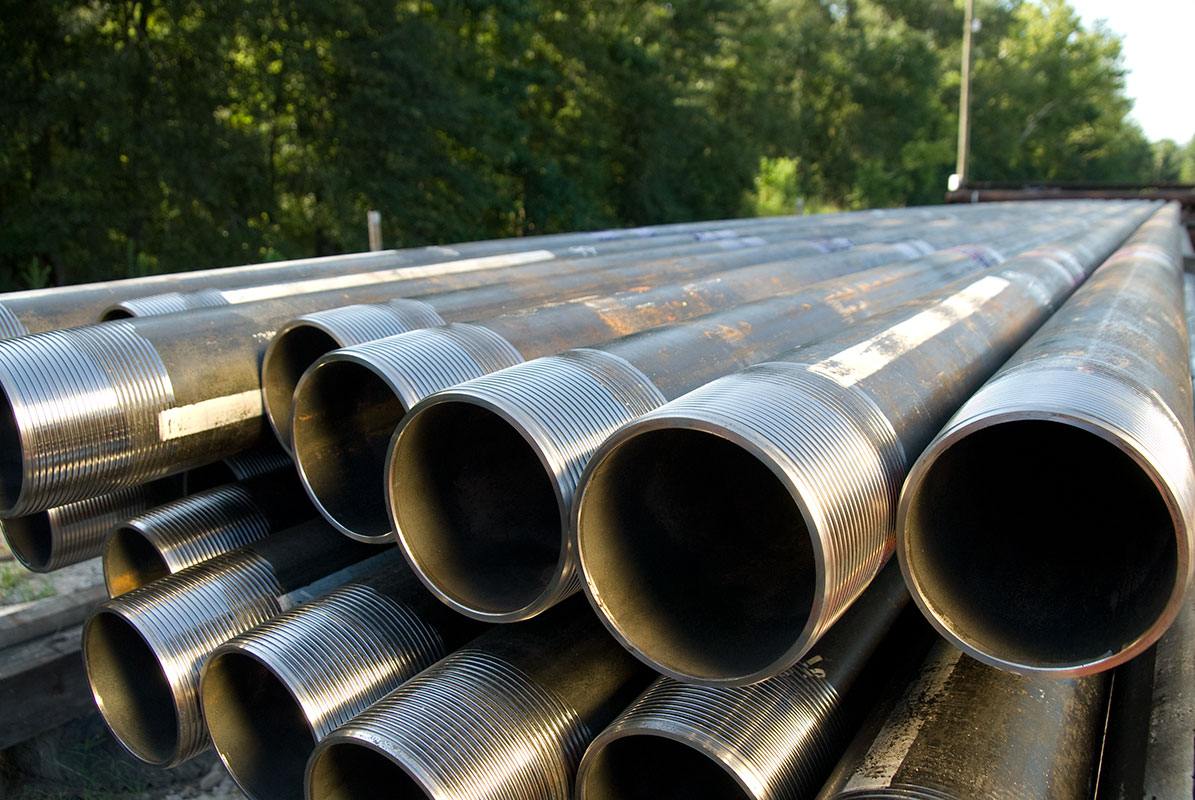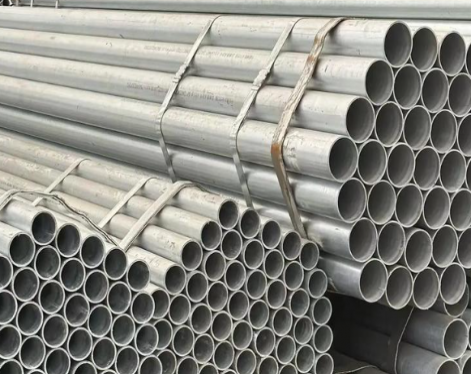Geological pipe is a steel pipe used for core drilling by geological departments. It is a type of seamless pipe. It is a steel pipe with a hollow section and no seams around it. According to the application, it can be divided into drill pipe, drill collar, core pipe, octg casing and sedimentation pipe, etc.
Main process flow
Electric arc furnace primary smelting--external refining--billet continuous casting--tube billet rolling--pipe billet piercing--heat treatment of blank pipe--cold drawing of steel pipe--heat treatment of finished product--steel pipe rectification--acceptance--packaging and storage

The use of geological pipes
1. Drill pipe:
A rod connected to a drill bit in a drilling tool to transmit power. The usual components of the drill string are: drill bit, drill collar, drill pipe, stabilizer, special joint and kelly. The basic functions of the drill pipe are:
(1) Lift and lower the drill bit;
(2) Apply drilling pressure;
(3) transmission of power;
(4) Transport drilling fluid;
(5) Carry out special operations: squeeze cement, deal with underground accidents, etc.
2. Drill collar:
Located at the lowest part of the drill string, it is the main component of the lower drilling tool assembly. Its main feature is its large wall thickness (generally 38~53mm, which is equivalent to 4~6 times the wall thickness of the drill pipe), and its large gravity and rigidity. It mainly plays the following roles in the drilling process:
(1) Apply drilling pressure to the drill bit;
(2) Ensure the necessary strength under compression conditions;
(3) Reduce the vibration, swing, and jump of the drill bit, so that the drill bit works smoothly;
(4) Control well deviation.
Drill collars come in many different shapes such as round, square, triangular and helical. The most commonly used are round (smooth) drill collars and helical drill collars.
3. Casing pipe:
A tube that fits over another part. The cross-section is circular, and it is used to protect round pipes of various materials for other equipment, mostly iron and steel. Casings are large diameter pipes that go into the open hole and are secured with cement. Oil well designers must design casings that can withstand various external forces, such as collisions, bursts, tension, etc., and chemical erosion.
During the drilling process, the casing is cemented into the wellbore, which can play a role in stabilizing the wellbore. As an important part of the wellbore, the casing has the following important functions:
1. Prevent borehole wall collapse, isolate different formations to prevent liquid convection between formations, and then play a role in controlling formation fluid and pressure during drilling.
2. Casing can also assist surface well control equipment and downhole production equipment to achieve their respective functions.
3. Casing is suitable for different well diameters and different material grades.
4. Grit compartment:
Located at the bottom of the tube well, it is used to contain the sand particles entering the well and the sediment precipitated from the water. The purpose is to find out the underground rock structure, groundwater, oil, natural gas and mineral resources, and use drilling rigs to drill wells.
Main process flow
Electric arc furnace primary smelting--external refining--billet continuous casting--tube billet rolling--pipe billet piercing--heat treatment of blank pipe--cold drawing of steel pipe--heat treatment of finished product--steel pipe rectification--acceptance--packaging and storage

The use of geological pipes
1. Drill pipe:
A rod connected to a drill bit in a drilling tool to transmit power. The usual components of the drill string are: drill bit, drill collar, drill pipe, stabilizer, special joint and kelly. The basic functions of the drill pipe are:
(1) Lift and lower the drill bit;
(2) Apply drilling pressure;
(3) transmission of power;
(4) Transport drilling fluid;
(5) Carry out special operations: squeeze cement, deal with underground accidents, etc.
2. Drill collar:
Located at the lowest part of the drill string, it is the main component of the lower drilling tool assembly. Its main feature is its large wall thickness (generally 38~53mm, which is equivalent to 4~6 times the wall thickness of the drill pipe), and its large gravity and rigidity. It mainly plays the following roles in the drilling process:
(1) Apply drilling pressure to the drill bit;
(2) Ensure the necessary strength under compression conditions;
(3) Reduce the vibration, swing, and jump of the drill bit, so that the drill bit works smoothly;
(4) Control well deviation.
Drill collars come in many different shapes such as round, square, triangular and helical. The most commonly used are round (smooth) drill collars and helical drill collars.
3. Casing pipe:
A tube that fits over another part. The cross-section is circular, and it is used to protect round pipes of various materials for other equipment, mostly iron and steel. Casings are large diameter pipes that go into the open hole and are secured with cement. Oil well designers must design casings that can withstand various external forces, such as collisions, bursts, tension, etc., and chemical erosion.
During the drilling process, the casing is cemented into the wellbore, which can play a role in stabilizing the wellbore. As an important part of the wellbore, the casing has the following important functions:
1. Prevent borehole wall collapse, isolate different formations to prevent liquid convection between formations, and then play a role in controlling formation fluid and pressure during drilling.
2. Casing can also assist surface well control equipment and downhole production equipment to achieve their respective functions.
3. Casing is suitable for different well diameters and different material grades.
4. Grit compartment:
Located at the bottom of the tube well, it is used to contain the sand particles entering the well and the sediment precipitated from the water. The purpose is to find out the underground rock structure, groundwater, oil, natural gas and mineral resources, and use drilling rigs to drill wells.









